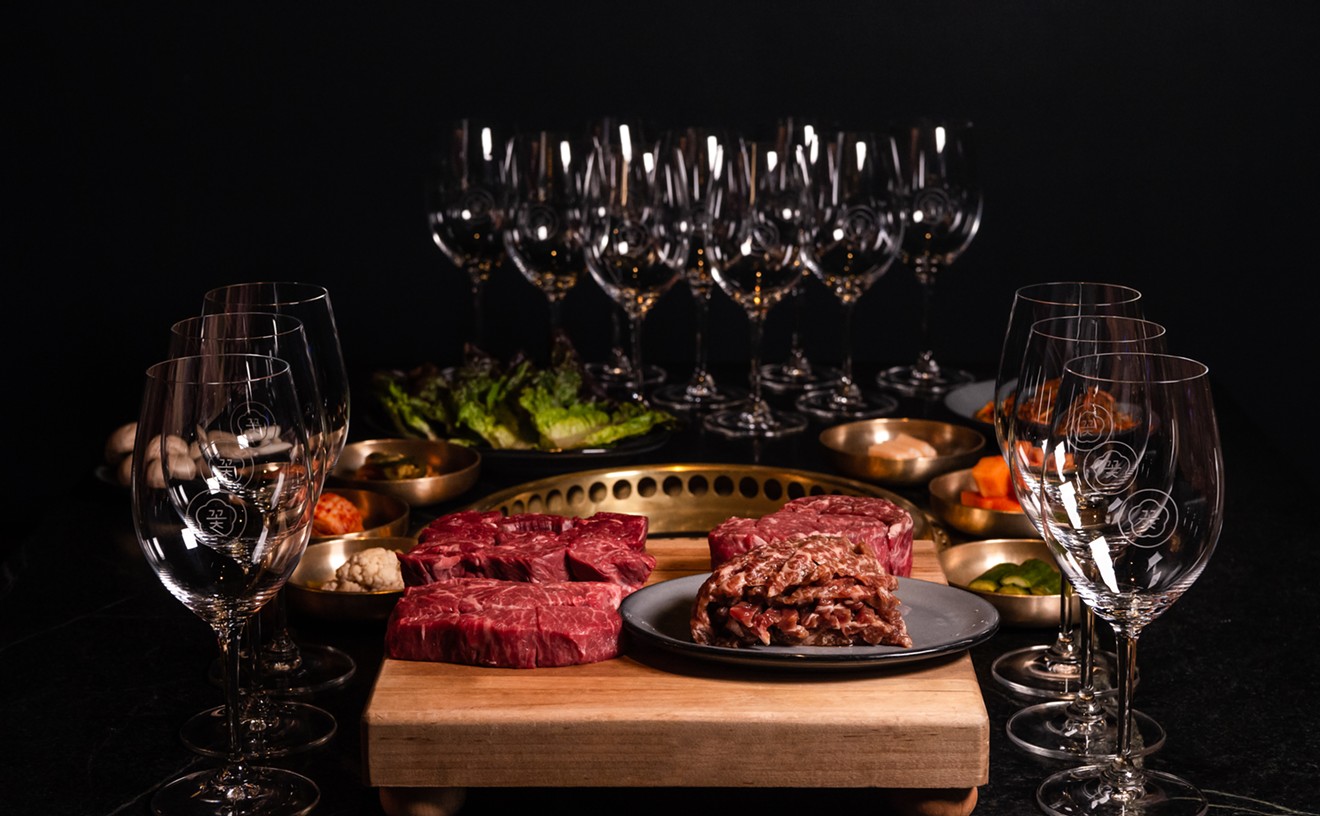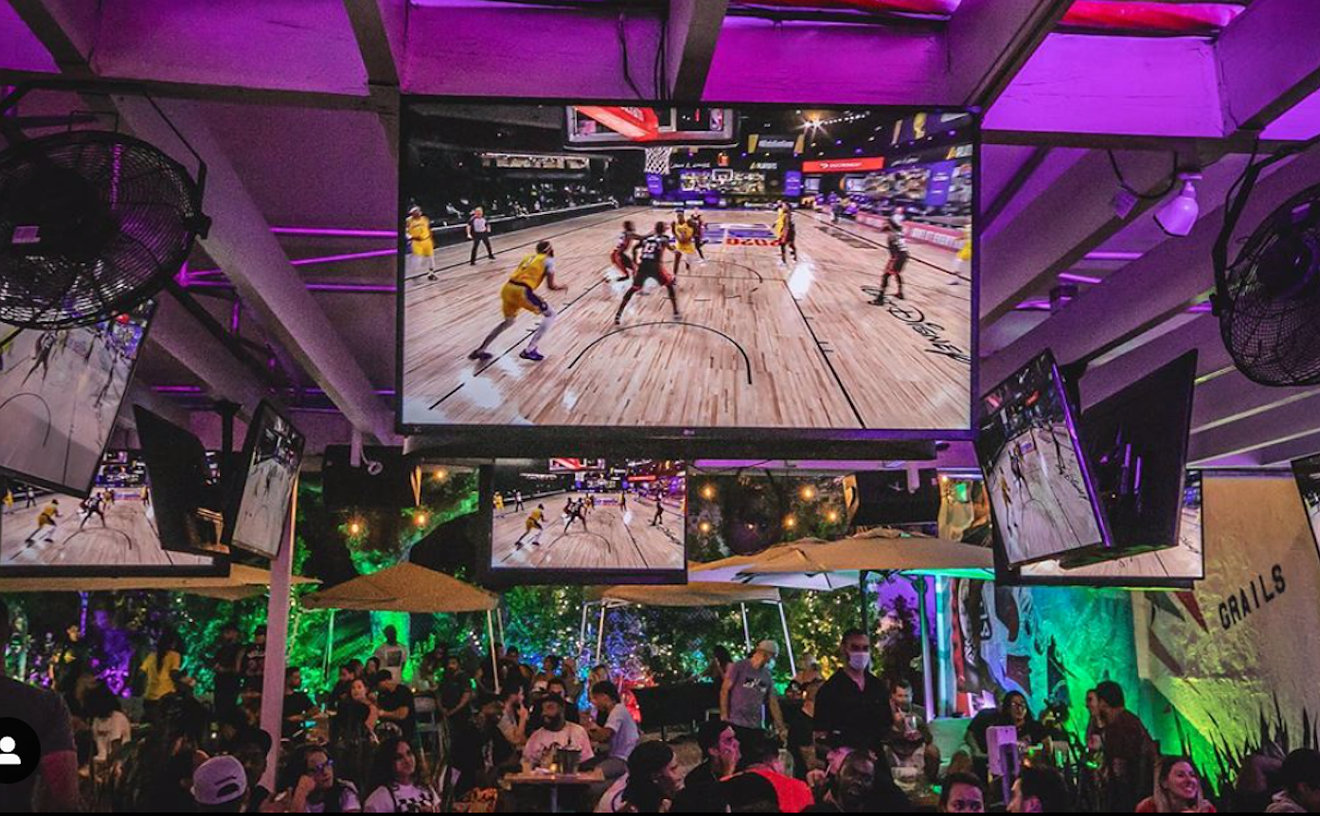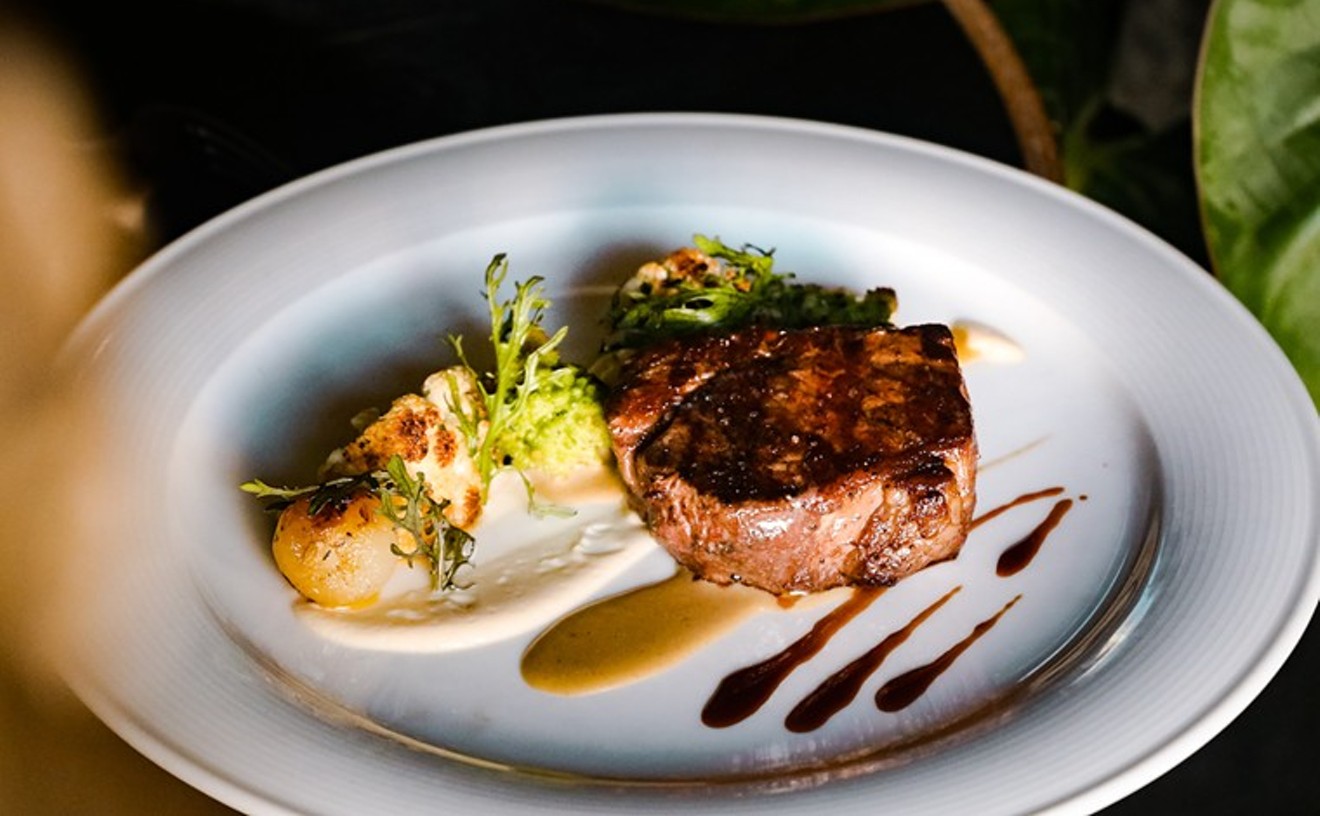For three short months in 2011, Aniece Meinhold and Cesar Zapata spent nights running the wildly popular Vietnamese pop-up Phuc Yea inside downtown Miami's Crown Bistro. Then, like a midsummer squall, the place vanished.
Here was a place offering in-your-face food rife with Vietnam's funky fragrances.
tweet this
At the time, contemporary Miami cuisine was just taking shape. Michael Schwartz's James Beard Award was barely a year old. Michelle Bernstein's Sra. Martinez was still slinging tapas in the Design District. The days when Miami's restaurant scene was defined by Jeffrey Chodorow's China Grill seemed to be happily fading into history.
Then came Meinhold and Zapata's jarring food, rife with Vietnam's herbaceous, funky fragrances. There were the Vietnamese rolling cakes called bánh cuon: rice-noodle sheets packed with ground pork and mushrooms dappled with shallots. There was green papaya salad, an assertive affair on both the heat and fish-sauce fronts. And pig ear salad boasted crisp slivers of fat-encased cartilage tossed with watermelon and jalapeños.
Before starting the pop-up, Zapata did time at the Four Seasons Hotel Houston. In 2003, he moved to Miami and took up in the kitchens of the Setai, Karu & Y, and Fratelli Lyon. Meinhold worked the front of the house at the Ritz-Carlton and Four Seasons, as well as at Fratelli Lyon with Zapata. (She also wrote briefly for New Times.) They honed their Vietnamese cooking skills in home kitchens under the watchful eye of Meinhold's Saigon-born mother, Annie Meinhold Tran, and the rest of her family, which is split between San Francisco and Paris.
They entered the Miami eating public's consciousness when they took over the Design District's Blue Piano, a short-lived wine bar on NE Second Avenue near Lemoni Café. There, Meinhold dazzled guests with her vast knowledge of affordable, unfamiliar wine varietals, while Zapata plied bites such as tender asparagus with tasso vinaigrette and charred lemon. After the place's owners locked them out in a landlord-tenant dispute, they considered abandoning Miami but opened Phuc (pronounced fook) Yea as one last hurrah. Crowds filled the place every night, but the unexpected success didn't pan out as many had hoped. Instead of opening a permanent place of the same name, the newly minted culinary darlings partnered with moneyman Alejandro Ortiz to open the Federal. The Southern-style tavern, leaning on Zapata's Houston roots, was located near Little Haiti. It seemed a drastic departure from what the two did best.
Miami wanted more of the crisp pork-filled rolls called cha giò. Instead, it got Buffalo pig wings and biscuits. The Federal closed earlier this year after a successful half-decade run punctuated by constant inquiries about when Phuc Yea would return. Nevertheless, Meinhold and Zapata say that for young restaurateurs, the Federal was an invaluable learning experience, filled with plenty of mistakes they now know how to avoid.
With Phuc Yea, however, regret is a thing of the past. In this dim, inviting 110-seater that opened September 1 in the Biscayne Boulevard space once occupied by Moonchine Asian Bistro, the 35-year-old Meinhold and 36-year-old Zapata seem at home. You can hear it in the late-'90s hip-hop that bumps over the sound system. You can smell it in the half-Cajun, half-Vietnamese seafood boils circling the dining room, which is littered with rough-hewn wood and Asian bric-a-brac. Most important, you can taste it in the nostril-flaring hits of fish sauce permeating nearly every plate.
The fermented fish brew is the common thread snaking through the menu. It's mostly deployed as nuoc mam, in which the musty, salty stuff is diluted with sugar and dashes of rice wine vinegar and water. Find plenty of it in the green papaya salad, where chilies, garlic, dried shrimp, and Vietnamese coriander are pulverized into a potent paste that's tossed with toothsome papaya threads, carrots, and sweet cherry tomatoes and then crowned with banana blossom ribbons, shallots, and herbs.
It's also found pooled at the bottom of blue-and-white spotted bowls filled with fat cubes of dredged and fried tofu encasing silken interiors. There's a drizzle of Coca-Cola hoisin that isn't nearly as sweet as it sounds. It's all showered with a house salt-and-pepper mix flecked with lemongrass, Thai chilies, and lime zest. This makes for a salty-sweet and glorious homage to the crispy tofu Meinhold's mother still eats.
There's even fish sauce in the eggplant curry, which at the moment is one of the city's premier vegetable dishes. The stars of it are the mottled green-and-white nightshades that are quartered and gently cooked in a pungent house-made curry. The sauce begins as a paste of ginger, galangal, turmeric, and fish sauce. Just before it's served, it's thinned with coconut milk and fortified with lemongrass, chilies, and even more fish sauce. Here, the fish sauce acts more as a seasoning, lending salt and a lip-smacking savoriness. The result retains the raw skins' natural tautness while just barely softening their fleshy interiors. Along with it are a bounty of Asian mushrooms, including minuscule enokis and ruffled, inky woodears.
Many of the dishes that appeared during the restaurant's first incarnation are also back. The crunchy fried smelt once served with lotus root chips and a lemon aioli have been given a thicker coating of rice and tapioca flour, providing more crunch. Unfortunately, that thicker coating also removes some of the briny oil that makes these tiny fish so delectable. Servers encourage tables to give them a squeeze of the accompanying lime wedge and a dip in the swirl of sriracha aioli at the bottom of the plate. This one simple dish encapsulates the main challenge Phuc Yea faces: How do you present the kind of Vietnamese food Meinhold and Zapata love to a mass audience? In reality, smelt need little more than their own skin and a squeeze of lime to be perfect. All of the accoutrements mask that delicious simplicity, making the smelt acceptable to a wider array of diners but also diluting the dish's soul.
Such isn't the case with their bánh cuon, which is anchored by wide, tender rice noodles spruced up with scallions and dried shrimp. On top of it goes an umami bomb of stir-fried ground pork with dried shrimp, jícama, and garlic, all dashed with a savory mushroom powder more potent that Walter White's Blue Ice.
Also exemplary are the classic cha giò. The crisp rice rolls filled with ground pork, mushrooms, jícama, and crab are common in households and street stands up and down Vietnam. However, this version is the lone offering not accompanied by the bounty of fresh herbs found at nearly every meal in that country. A shred of the Thai basil, mint, Vietnamese coriander, sawtooth, or red perilla adorning so many of Phuc Yea's other plates is just what this one needs.
There's no shortage of the stuff on the crispy fish that on a recent night was a yellow jack deboned, diced up, dredged in cornstarch, tapioca, and rice flour and then fried and tossed in lemongrass, the house salt-and-pepper mix, and garlic chives. Had the fish spent just 30 seconds less in the fryer, it would have been perfectly juicy.
Such was the case with the Cajun wok filled with fat, perfectly tender Key West pink shrimp, corn, steamed potatoes, and smoky andouille sausage. It's a mix-and-match affair, one that encapsulates the restaurant's main thrust: blending Meinhold's Vietnamese heritage with the Southern cooking that Zapata remains connected to after his near-decade in Houston. With this dish, you can combine crab with green curry or garlic butter sauce, or opt for Florida clams in a Cajun sauce. Whichever protein you choose (crawfish will soon be in the offing), go with the chili garlic that infuses the buttery, Worcestershire-dosed Cajun sauce with garlic chives and Thai bird chilies.
This is the kind of food Miami needs more of but has unfortunately rejected in the past. It happened at the Vagabond when the city became enthralled with and then quickly tired of Alex Chang's inventive, sometimes-obscure cuisine. Chef-turned-butcher Matt Hinckley's short-lived Boxpark, which plied alligator and boar sausage in Brickell, was another fast-fading star. At Phuc Yea, Zapata and Meinhold are in their happy place and doing their best work. Hopefully, they'll be doing it for a good long while.
Phuc Yea
7100 Biscayne Blvd., Miami; 305-602-3710; phucyea.com. Dinner Tuesday and Wednesday 6 to 10 p.m., Thursday 6 to midnight, Friday and Saturday 6 to 11 p.m., Sunday 6 to 9 p.m.
Green papaya salad $10
Crispy tofu $9
Salt 'n' peppa fishies $16
Eggplant curry $16
Cajun wok with shrimp $30
Crispy fish $24
Bánh cuon $10
Cha giò $7










